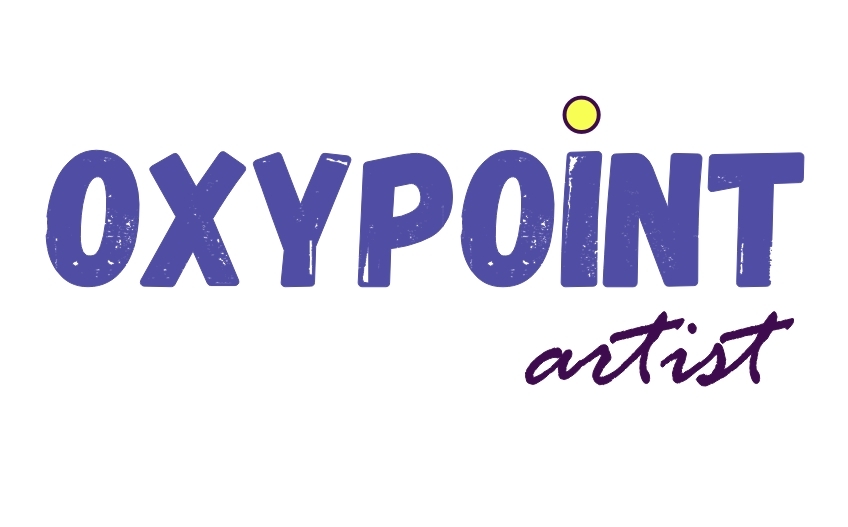Free Shipping
Contemporary Artist Oxypoint, paint tubes, basic colors, artist's basic palette, artist's paints
What Paint Colors Does a Beginning Artist Need?
Embarking on the journey of painting as a beginner can be both exciting and overwhelming. One of the first questions you’ll likely ask yourself is: What paint colors do I need? With so many hues available, it can be challenging to decide which colors are essential for starting your artistic practice. Fortunately, you don’t need to invest in a vast array of paints to begin your creative journey. A carefully selected palette of basic colors will allow you to mix a wide range of shades and tones, giving you the freedom to explore and experiment.
The Essential Colors for a Beginner’s Palette

Primary Colors: Red, Blue, Yellow
The foundation of any color palette lies in the primary colors: red, blue, and yellow. These three colors cannot be created by mixing other colors but can be combined to produce nearly every other hue on the color wheel.
The foundation of any color palette lies in the primary colors: red, blue, and yellow. These three colors cannot be created by mixing other colors but can be combined to produce nearly every other hue on the color wheel.
- Red: Choose a versatile red like Cadmium Red or Alizarin Crimson. Cadmium Red is a warm, opaque red, while Alizarin Crimson is cooler and more transparent.
- Blue: Ultramarine Blue and Phthalo Blue are excellent choices. Ultramarine Blue is warmer with a slightly purplish tint, while Phthalo Blue is a cooler, more vibrant blue.
- Yellow: Consider Cadmium Yellow or Lemon Yellow. Cadmium Yellow is warm and rich, ideal for mixing vibrant oranges and greens. Lemon Yellow is cooler and great for lighter, fresher greens.

"Peak of Golte. Above the clouds", oil on canvas panel, 30x40 cm (11.8х15.7 in), artist OXYPOINT
Secondary Colors: Green, Orange, Purple
While you can mix secondary colors from the primary ones, it’s helpful to have a few pre-mixed secondary colors on hand to save time and ensure consistency in your work.
While you can mix secondary colors from the primary ones, it’s helpful to have a few pre-mixed secondary colors on hand to save time and ensure consistency in your work.
- Green: Sap Green or Viridian are excellent for landscapes and foliage. Sap Green is a warm, natural green, while Viridian is cooler and more vivid.
- Orange: Cadmium Orange is a bright, bold choice that’s perfect for capturing the warmth of sunsets and autumn leaves.
- Purple: Dioxazine Purple or Violet are deep, rich purples that can add depth and contrast to your paintings.

"Snowdrops", oil on canvas panel, 30x40 cm (11.8х15.7 in), artist OXYPOINT
Neutral Colors: White, Black, Brown
Neutrals are indispensable for creating a range of values and tones, from light to dark, and for mixing with other colors to adjust their intensity.
Neutrals are indispensable for creating a range of values and tones, from light to dark, and for mixing with other colors to adjust their intensity.
- White: Titanium White is a must-have. It’s opaque and perfect for lightening colors and creating highlights.
- Black: While some artists prefer to mix their own blacks, having Mars Black or Ivory Black is convenient for deepening shadows and creating contrasts.
- Brown: Burnt Sienna and Burnt Umber are versatile browns that are useful for creating warm, earthy tones and natural shadows.

"The simple beauty of nature", oil on canvas panel, 30x40 cm, artist OXYPOINT
Additional Helpful Colors
As you become more confident with your painting, you might want to expand your palette with a few additional colors that can add variety and subtlety to your work.
As you become more confident with your painting, you might want to expand your palette with a few additional colors that can add variety and subtlety to your work.
- Yellow Ochre: A warm, earthy yellow that’s perfect for landscapes and skin tones.
- Payne’s Gray: A dark blue-gray that’s excellent for cool shadows and stormy skies.
- Cerulean Blue: A light, sky-blue that’s useful for painting skies and water.
Why Start with a Limited Palette?
Starting with a limited palette is advantageous for beginners for several reasons:
- Color Mixing Mastery:A limited palette forces you to learn how to mix colors, helping you to understand color theory and the relationships between colors. This skill is essential for any artist.
- ConsistencyWith fewer colors, you’re more likely to achieve harmonious and consistent results in your paintings, avoiding muddy or clashing colors.
- Cost-EffectivePaints can be expensive, so starting with a basic set allows you to invest in higher-quality materials without breaking the bank.
- Creative ChallengeLimiting your color choices can push your creativity, encouraging you to find innovative solutions and think more critically about your color choices.
As a beginning artist, your palette doesn’t need to be extensive to be effective. By focusing on a selection of essential colors—primary, secondary, and neutrals—you’ll be well-equipped to start your painting journey. With time and practice, you’ll develop a deeper understanding of color mixing and discover which additional hues best complement your style and subject matter. Remember, the key to becoming a successful artist lies not in the quantity of colors you have but in how you use them. Happy painting!
Customer Service
Subscribe to be the first to know about new paintings:
© 2025 OXYPOINT
I use cookies to provide the best site experience.
